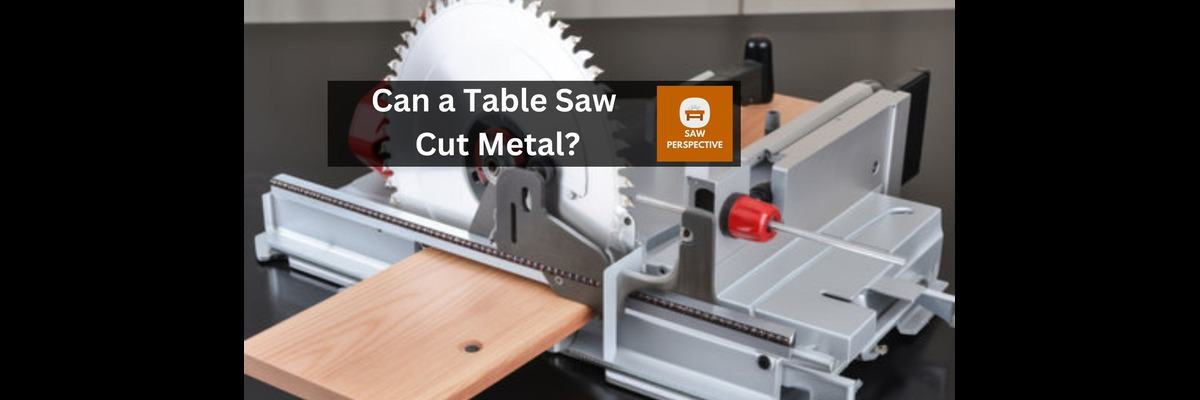Absolutely, with the right blade and proper techniques, a table saw can cut metals. This allows it to excel in various metalworking projects.
A high-speed abrasive disc is placed for precise and efficient cuts through metal.
To achieve superb metal cutting on a table saw, it is crucial to equip the saw with an appropriate blade. For smaller pieces, use a handheld hacksaw with a fine-toothed blade that offers versatility.
A carbide-tipped blade with a lower tooth count is often ideal for cutting metal. Regardless of the technique employed, always prioritize safety for a positive cutting experience.
Applying a suitable lubricant or coolant further enhances the cutting process. It also reduces friction and enhances the blade’s performance.
Using these positive techniques and safety measures makes a table saw versatile.
How to choose a table saw blade for cutting metal?
Choosing the right table saw blade for cutting metal is crucial to ensure clean and precise cuts while maintaining safety. Here are some key factors to consider when selecting a table saw blade for cutting metal:
1. Blade Material
Look for blades specifically designed for cutting non-ferrous metals like aluminum or brass. Carbide-tipped blades are a good choice because they are durable and can handle the rigors of cutting metal.
2. Tooth Count
A blade with a lower tooth count is very useful for achieving precise and efficient metal cutting.
Blades with fewer teeth (around 24 to 60) are better suited for metal cutting. As they provide more space for chips to clear, reducing the risk of overheating.
3. Tooth Design
Opt for a blade with an alternate top bevel (ATB) tooth design. This helps to reduce heat buildup during cutting and provides a cleaner finish.
4. Tooth Grind
A triple-chip or modified triple-chip grind is often recommended for cutting metal.
This type of grind alternates between flat-top raker teeth and beveled-top cutting Teeth.
5. Blade Coating
Some blades come with special coatings, such as anti-friction or anti-stick coatings.
These coatings can help reduce heat and friction during cutting, resulting in smoother cuts.
6. Blade Size
Ensure that the blade size matches the specifications of your table saw. Using the correct blade size is essential for safety and optimal performance.
7. Feed Rate
When cutting metal on a table saw, it’s important to use a slower feed rate compared to cutting wood. This helps prevent overheating and ensures a cleaner cut.
8. Coolant or Lubrication
Consider using a coolant or lubrication system to keep the blade cool during the cutting process. This can help prolong the life of the blade and improve the quality of the cut.
What are the safety precautions for cutting metal?
Here are some safety precautions we have to take for cutting metal.
- Wear Personal Protective Equipment (PPE):
- Safety glasses or face shield
- Hearing protection
- Gloves
- Long sleeves and pants to protect the skin
- Secure the Workpiece:
- Ensure the metal is securely clamped or held in place to prevent movement during cutting.
- Choose the Right Blade:
- Select a blade designed for cutting metal and ensure it is properly installed and aligned.
- Check Blade Speed:
- Set the table saw to the appropriate blade speed for cutting metal.
- Maintain a Slow Feed Rate:
- Use a controlled and slow feed rate to avoid overheating the blade and workpiece.
- Disconnect Power:
- Ensure the table saw is powered off and unplugged before changing blades or making adjustments.
- Follow Manufacturer Guidelines:
- Adhere to the table saw manufacturer’s instructions and recommendations for safe operation.
- Keep Hands Clear:
- Keep hands and body parts clear of the cutting path and blade to avoid injury.
Read more: Table Saw Safety Precautions
What are common issues for metal cutting with table saws?
Here we talk about some issues and their solutions for cutting metal with table saws.
1. Issue: Excessive Heat Buildup
- Solution: Use a suitable lubricant or coolant to reduce friction and heat during cutting, and ensure a slower feed rate.
2. Issue: Poor Cut Quality or Chipping
- Solution: Choose a blade with the appropriate tooth count and design for metal cutting, and make sure it is sharp and properly aligned.
3. Issue: Workpiece Movement or Vibration
- Solution: Securely clamp the metal workpiece in place to prevent movement, and check for proper alignment of the blade and fence.
4. Issue: Premature Blade Wear
- Solution: Use a high-quality, carbide-tipped blade designed for metal cutting. Also, periodically inspect and maintain the blade for sharpness and condition.
5. Issue: Safety Concerns
- Solution: Adhere to safety guidelines, and wear proper PPE. Ensure the table saw is in good working condition, with operators trained on safe usage.

